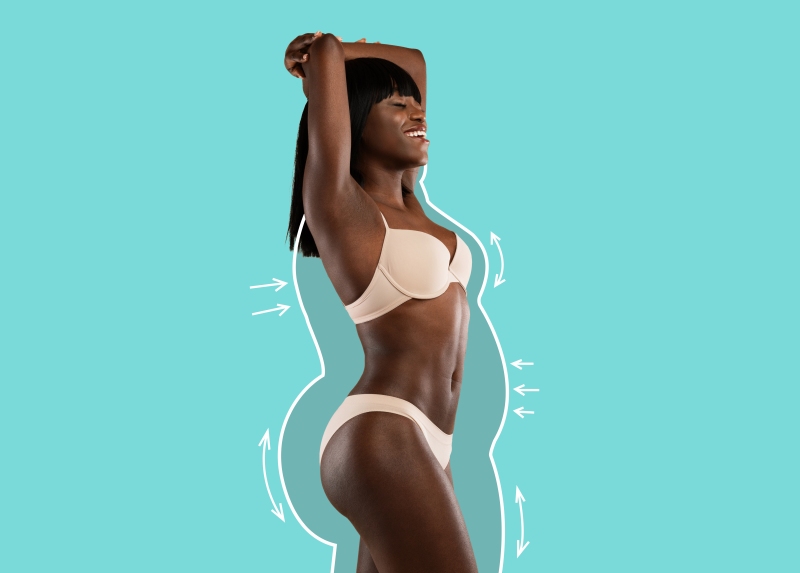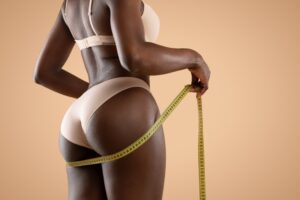Beyond the BBL: Exploring Fat Transfer to Enhance Other Body Parts

- Unleashing the Potential: Fat Transfer as a Versatile Cosmetic Procedure
- Facial Rejuvenation: Sculpting Youthful Features with Fat Transfer
- Enhancing Breasts Naturally: Fat Transfer for Breast Augmentation
- Sculpting Silhouettes: Fat Transfer for Body Contouring
Unleash the potential of fat transfer, sculpt youthful facial features, enhance breasts naturally, and contour your desired body with this versatile and transformative cosmetic procedure.
Unleashing the Potential: Fat Transfer as a Versatile Cosmetic Procedure
When it comes to enhancing our appearance, there’s a remarkable procedure that has gained popularity in recent years: fat transfer. While commonly associated with the Brazilian Butt Lift (BBL), fat transfer has proven to be a versatile cosmetic procedure with the potential to transform not only the buttocks but also other body parts. In this blog post, we will explore the versatility of fat transfer, its applications beyond the BBL, and the potential it holds for achieving a wide range of aesthetic goals. Fat transfer, also known as fat grafting or fat injection, involves harvesting excess fat from one area of the body and transferring it to another area that requires enhancement. This innovative technique not only allows individuals to address specific concerns but also harnesses the natural potential of their own body tissues. The versatility of fat transfer lies in its ability to reshape, rejuvenate, and enhance various body parts with long-lasting and natural-looking results.
One notable application of fat transfer is in facial rejuvenation. As we age, our face may lose volume and develop wrinkles, leading to a tired or sunken appearance. Fat transfer offers a solution by restoring volume and enhancing facial contours. With carefully harvested fat, skilled plastic surgeons can artfully inject fat into areas such as the cheeks, temples, nasolabial folds, or lips, resulting in a more youthful and rejuvenated appearance. The use of one’s own fat ensures a safe and natural outcome, as it integrates seamlessly with the existing facial tissues. Beyond facial rejuvenation, fat transfer can also be employed for breast augmentation, offering a natural alternative to traditional implants. By transferring fat to the breasts, individuals can achieve increased volume, improved shape, and enhanced symmetry. This technique allows for a more personalized and tailored approach to breast augmentation, as fat can be selectively injected to address specific areas of concern. The natural feel and appearance of fat transfer make it an appealing option for those seeking a more subtle and realistic outcome.
In addition to facial and breast enhancements, fat transfer can be utilized for body contouring purposes. This procedure enables individuals to sculpt and refine their silhouette by transferring fat to areas such as the breasts, hips, or calves. It can help improve proportions, correct asymmetry, or enhance curves, allowing individuals to achieve a harmonious and balanced physique. The ability to combine liposuction with fat transfer during body contouring procedures provides the added benefit of contouring multiple areas in a single surgery, maximizing the transformative potential of the procedure. The versatility of fat transfer is not limited to specific body parts or concerns. It can also be used to improve the appearance of scars, restore volume in the hands, or rejuvenate aging hands. Moreover, fat transfer can be combined with other surgical procedures to achieve comprehensive and transformative results.
In conclusion, fat transfer is a versatile cosmetic procedure that offers individuals the opportunity to unleash the potential of their own body tissues. Whether it’s rejuvenating the face, enhancing the breasts, contouring the body, or addressing other specific concerns, fat transfer allows for personalized and natural-looking results. By harnessing the versatility of fat transfer, individuals can work with skilled plastic surgeons to achieve their aesthetic goals and enjoy long-lasting, transformative outcomes. If you’re considering fat transfer, consult with a board-certified plastic surgeon to explore the possibilities and uncover the full potential of this innovative procedure.
Facial Rejuvenation: Sculpting Youthful Features with Fat Transfer
As we age, our faces undergo changes that can impact our self-confidence and how we perceive ourselves. The loss of facial volume, sagging skin, and the appearance of wrinkles and lines can make us look older than we feel. Fortunately, advancements in cosmetic procedures have opened up innovative options for facial rejuvenation, and one such technique gaining popularity is fat transfer. By utilizing the body’s own fat cells, fat transfer offers a natural and effective way to restore volume, improve contours, and sculpt youthful features. In this blog post, we will explore the concept of facial rejuvenation through fat transfer and how it can help individuals achieve a more youthful appearance. Facial rejuvenation through fat transfer involves the extraction of excess fat from one part of the body, such as the abdomen or thighs, and carefully injecting it into specific areas of the face that require volume restoration. This technique not only addresses volume loss but also stimulates collagen production and improves skin texture, resulting in a more rejuvenated and youthful appearance.
One of the significant advantages of fat transfer for facial rejuvenation is the use of the body’s natural resources. Since the fat used in the procedure is from the patient’s own body, it minimizes the risk of allergic reactions or complications often associated with synthetic fillers. The natural fat cells contain a wealth of regenerative properties, including stem cells, which can enhance tissue rejuvenation and provide long-lasting results. The procedure begins with a consultation with a board-certified plastic surgeon who will evaluate the individual’s unique facial features and discuss their desired outcome. During the fat transfer procedure, the surgeon carefully harvests the fat cells using liposuction techniques. The harvested fat is then purified to remove impurities and excess fluids before it is strategically injected into targeted areas of the face.
One of the key benefits of facial fat transfer is its versatility. The surgeon can precisely sculpt and contour various facial features, such as the cheeks, temples, nasolabial folds, or lips, depending on the individual’s specific concerns. The technique allows for precise customization to achieve natural-looking results that enhance the individual’s unique beauty. Moreover, the results of fat transfer for facial rejuvenation are long-lasting. While some of the transferred fat cells may not survive, a significant portion establishes a blood supply in the new location, ensuring their viability for years to come. Over time, the body naturally integrates these fat cells into the surrounding tissues, providing a lasting enhancement to the facial contours.
Another notable advantage of fat transfer is its ability to address multiple concerns simultaneously. In addition to rejuvenating facial features, fat transfer can also be combined with liposuction to remove excess fat from other areas of the body, creating a more balanced and harmonious appearance overall. Recovery after facial fat transfer is generally well-tolerated, with most individuals experiencing mild swelling and bruising that subsides within a few days to a week. It is crucial to follow the surgeon’s post-operative instructions to optimize healing and ensure the best possible outcome. In conclusion, facial rejuvenation through fat transfer offers a safe, natural, and effective way to restore volume, enhance contours, and sculpt youthful features. By utilizing the body’s own fat cells, this technique provides long-lasting results that can rejuvenate the face and boost self-confidence. When considering facial fat transfer, it is essential to consult with a qualified and experienced plastic surgeon who can assess your unique needs, develop a personalized treatment plan, and guide you through the process. Embrace the opportunity to sculpt a more youthful appearance and restore your confidence with facial rejuvenation through fat transfer.
Enhancing Breasts Naturally: Fat Transfer for Breast Augmentation
Breast augmentation is a cosmetic procedure that has gained immense popularity over the years. While traditional breast augmentation methods often involve the use of implants, an alternative approach gaining momentum is breast augmentation using fat transfer. This innovative technique allows individuals to enhance their breasts naturally by utilizing their own fat from other areas of the body. In this blog post, we will explore the concept of fat transfer for breast augmentation, highlighting its benefits and considerations. Fat transfer for breast augmentation, also known as autologous fat grafting, offers a unique solution for individuals seeking to enhance their breasts without the use of implants. The procedure involves two main steps: liposuction to harvest excess fat from areas such as the abdomen, thighs, or hips, and then injecting the purified fat into the breasts to increase their volume and improve their shape. This technique not only provides a natural-looking outcome but also offers the added benefit of body contouring through liposuction in donor sites.
One of the key advantages of fat transfer for breast augmentation is the natural feel and appearance it provides. Since the procedure uses the patient’s own fat, the results are generally softer and more natural-looking compared to breast implants. The transferred fat integrates seamlessly with the existing breast tissue, resulting in a harmonious and balanced outcome. Additionally, the risk of complications such as implant rupture or capsular contracture, which can be associated with traditional breast augmentation, is significantly reduced with fat transfer. Another benefit of fat transfer for breast augmentation is the potential for simultaneous body contouring. During the liposuction phase of the procedure, excess fat is harvested from donor sites, sculpting and improving the contours of the body. This dual benefit allows individuals to address areas of concern, such as stubborn pockets of fat, while enhancing their breasts. It offers a comprehensive solution for achieving overall body harmony and proportion.
The recovery process after fat transfer for breast augmentation is generally smoother compared to traditional breast augmentation with implants. Since no incisions or implants are involved, there is typically less post-operative discomfort and a faster recovery time. However, it is important to note that each individual’s recovery may vary, and it is crucial to follow the post-operative instructions provided by your plastic surgeon. These instructions may include wearing a compression garment, avoiding strenuous activities, and ensuring proper wound care to optimize healing and achieve the desired results. As with any cosmetic procedure, it is essential to consult with a board-certified plastic surgeon who specializes in fat transfer for breast augmentation. They will assess your unique body characteristics, discuss your aesthetic goals, and determine if you are a suitable candidate for the procedure. They will guide you through the process, addressing any concerns or questions you may have and ensuring that your expectations align with what can be realistically achieved through fat transfer.
In conclusion, fat transfer for breast augmentation offers individuals a natural and innovative approach to enhancing their breasts. The procedure allows for the use of the patient’s own fat, resulting in a natural look and feel, reduced risk of complications, and the potential for simultaneous body contouring. By consulting with a qualified plastic surgeon, individuals can explore the possibilities of fat transfer for breast augmentation and make informed decisions about achieving their desired aesthetic goals naturally.
Sculpting Silhouettes: Fat Transfer for Body Contouring
When it comes to achieving the desired body contours, traditional diet and exercise may not always provide the desired results. Fortunately, advancements in cosmetic procedures have paved the way for innovative techniques such as fat transfer, offering individuals the opportunity to sculpt their silhouettes and achieve their aesthetic goals. In this blog post, we will explore the technique of fat transfer for body contouring, discussing its benefits, process, and the transformative impact it can have on enhancing your overall appearance. Fat transfer, also known as autologous fat grafting or lipofilling, involves the extraction of excess fat from one area of the body and strategically injecting it into targeted areas that require enhancement or volume restoration. This procedure not only helps sculpt and shape specific body parts but also provides a natural and long-lasting solution as it uses the individual’s own fat cells.
One of the key benefits of fat transfer for body contouring is its ability to address multiple areas in a single procedure. The harvested fat can be used to augment various body parts such as the breasts, hips, buttocks, calves, or even to correct asymmetry. By strategically injecting the fat, plastic surgeons can create a more balanced and harmonious silhouette, enhancing the natural curves and contours of the body. Moreover, fat transfer offers a natural-looking outcome compared to synthetic implants. Since the transferred fat is from the individual’s own body, it integrates seamlessly with the existing tissues, resulting in a more natural appearance and texture. Additionally, the risk of implant-related complications such as rupture or rejection is eliminated, providing peace of mind to those seeking body contouring solutions.
The process of fat transfer for body contouring typically involves three main steps: extraction, purification, and injection. First, excess fat is harvested from areas with an ample fat supply, such as the abdomen, thighs, or flanks, through liposuction techniques. The extracted fat is then carefully processed to remove impurities and separate the viable fat cells. Finally, the purified fat cells are injected into the targeted areas, precisely sculpting and augmenting the desired body parts. The recovery process after fat transfer for body contouring is generally well-tolerated. Some swelling, bruising, and discomfort in both the donor and recipient areas may be experienced, but these effects are temporary. Patients are usually advised to avoid strenuous activities for a certain period and to wear compression garments to support the healing process and optimize results. Following the surgeon’s post-operative instructions is crucial to ensure proper healing and to maintain the sculpted contours.
It is important to note that fat transfer for body contouring requires the expertise of a board-certified plastic surgeon who specializes in these techniques. The surgeon’s skill and artistic eye play a vital role in achieving the desired results. During the consultation, the surgeon will evaluate the individual’s unique body characteristics, discuss goals and expectations, and create a personalized treatment plan tailored to their specific needs. In conclusion, fat transfer for body contouring is a transformative procedure that allows individuals to sculpt and shape their silhouettes, enhancing their overall appearance and boosting their confidence. By utilizing the body’s own fat cells, this technique provides natural-looking results, minimizes the risk of complications, and offers long-lasting outcomes. If you are considering body contouring, consult with a qualified plastic surgeon who can guide you through the process and help you achieve the sculpted contours you desire.



